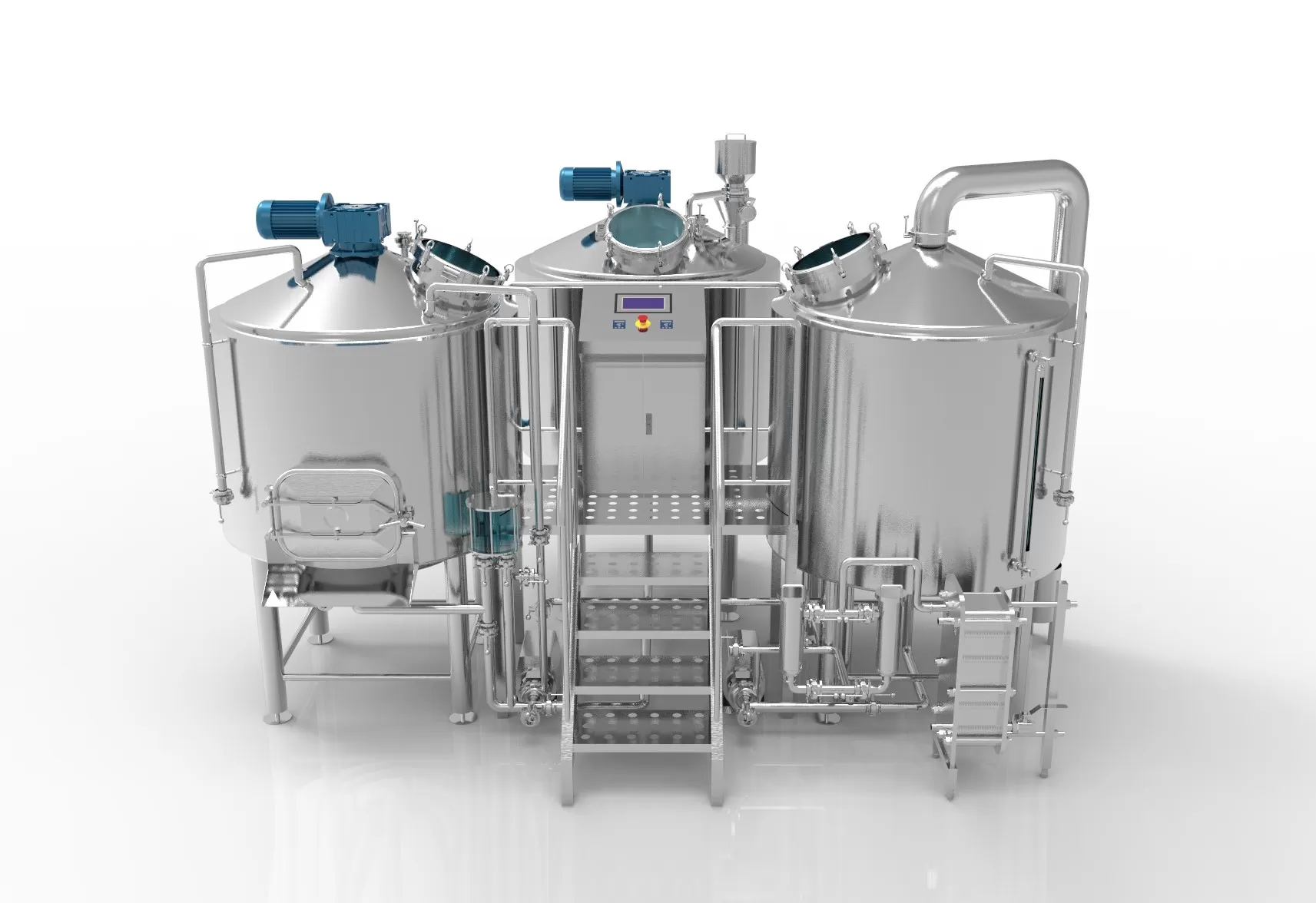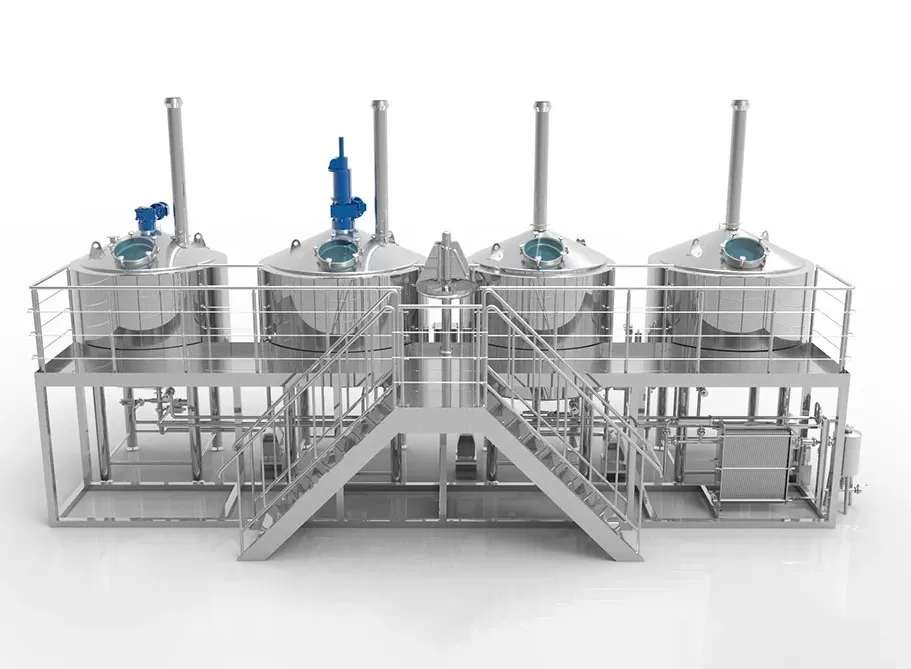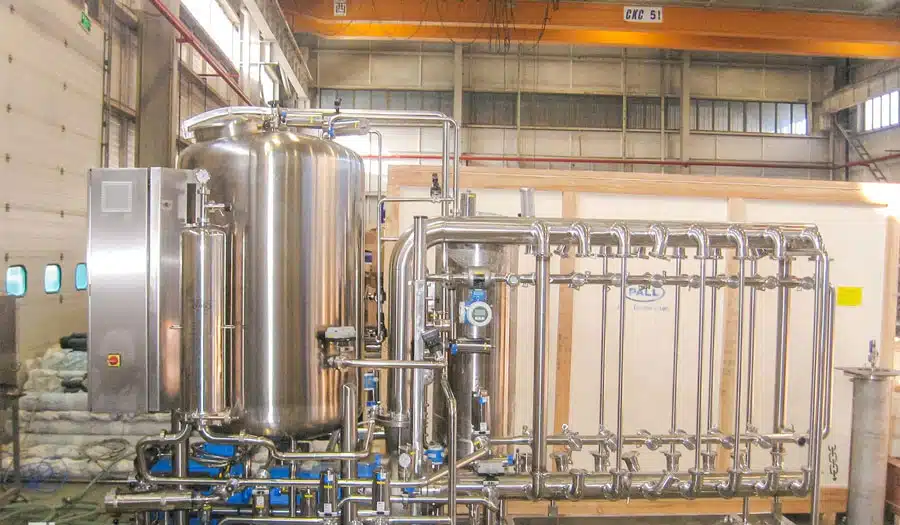Při vaření piva je chladič mladiny jedním z nejdůležitějších zařízení. Zajišťuje nejen kvalitu vaření piva, ale také přímo ovlivňuje hladký průběh vaření. fermentace proces. Úloha, kritéria výběru a typy chladičů mladiny jsou znalosti, kterým musí nadšenci domácího vaření piva do hloubky porozumět. Tento průvodce začne definicí chladiče mladiny a podrobněji se bude věnovat jeho úloze, důvodům výběru a způsobu výběru vhodného chladiče mladiny.
Co je to chladič mladiny?
Chladič mladiny je zařízení, které se používá k rychlému snížení teploty mladiny po varu. V procesu vaření piva domácí piva se teplota mladiny po varu zvyšuje, obvykle až na 100 °C. Aby se mladina dostala do vhodného teplotního rozmezí (obvykle 18 °C až 25 °C) pro kvašení kvasnic, je třeba ji zchladit na cílovou teplotu.
Proces chlazení může nejen účinně snížit teplotu mladiny, ale také pomoci odstranit škodlivé látky vznikající během varu, aby tyto látky neměly negativní vliv na proces kvašení. Chladič mladiny využívá principu účinné výměny tepla ke snížení teploty mladiny v krátkém čase na rozsah potřebný pro kvašení a je nepostradatelným zařízením při vaření piva.
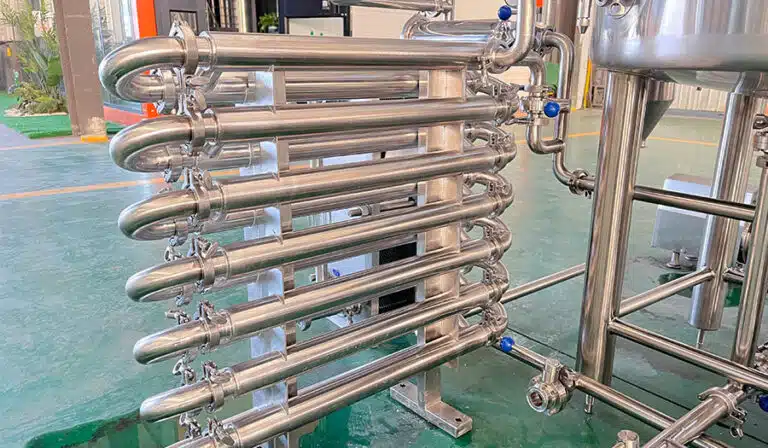
Jak funguje chladič mladiny?
The basic principle of an immersion wort chiller is pretty simple. Copper tubing is usually about 25-50 feet long and forms a large coil. Five minutes before the end of the boil, the immersion chiller’s copper coil should be immersed in the hot wort.
Po skončení varu by měla být přívodní hadice vody bezpečně připojena k vodovodnímu potrubí. Druhá hadice by měla být bezpečně připojena k odtokovému potrubí, kde se nebude pohybovat. To je obzvláště důležité, protože voda vytékající z hadice bude velmi horká.
Jakmile jste připraveni, zapněte přívod vody a nechte jím protékat stálý proud studené vody. Jak studená voda protéká měděnou trubkou, teplo z mladiny se předává přes měděnou trubku chladnější vodě, která jí protéká. Tím se mladina nakonec dostane na pokojovou teplotu rychleji než při použití ledové lázně.
Úloha chladiče mladiny
Chladicí účinek
Hlavní funkcí chladiče mladiny je rychlé ochlazení mladiny o vysoké teplotě. Teplota mladiny těsně po varu je obvykle vysoká a je třeba ji v co nejkratší době ochladit na teplotu potřebnou pro kvašení. Příliš vysoká teplota potlačuje aktivitu kvasinek, zatímco příliš nízká teplota může vést k neúplnému rozmnožení kvasinek. Chladič proto může pomoci kontrolovat teplotu během procesu vaření, aby kvasinky mohly hladce kvasit a vytvářet ideální chuť piva.
Snižte riziko bakteriální infekce.
Během varu je mladina vystavena vzduchu. Pokud není dostatečně rychle ochlazena, může se při vysoké teplotě dostat do kontaktu s mikroorganismy ve vzduchu, což zvyšuje riziko bakteriální infekce. Použitím chladiče mladiny lze rychle snížit teplotu mladiny, čímž se sníží možnost množení bakterií a riziko zkažení piva. To je důležité zejména pro domácí pivovary, protože jejich vybavení a podmínky prostředí jsou relativně omezené a nemohou provádět přísnou aseptickou úpravu jako komerční pivovary.
Podporuje tvorbu koagulace a sedimentu.
Chladič mladiny může také pomoci podpořit srážení a precipitaci bílkovin a polyfenolů v mladině. Tyto látky vytvoří během procesu chlazení sedimenty, čímž se sníží stupeň zakalení piva. Po zchlazení je mladina obvykle čirší, což hraje důležitou roli při zlepšování vzhledové kvality a chuti piva.
Zajistěte hladký průběh procesu kvašení piva.
Během procesu vaření piva jsou ve fázi kvašení kladeny přísné požadavky na teplotu. Různé druhy kvasinek se při různých teplotách chovají odlišně. Pokud není chlazení včasné nebo teplota není správně kontrolována, může to ovlivnit aktivitu kvasinek, což má za následek neúplné kvašení nebo příliš rychlé kvašení, které následně ovlivní chuť a vůni piva. Použití chladiče mladiny proto může zajistit ideální teplotní prostředí pro kvasinky a zajistit tak hladký průběh procesu kvašení.
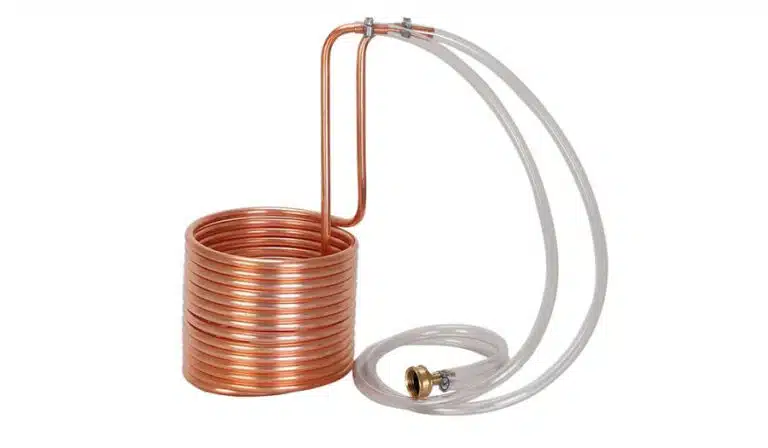
Proč si vybrat chladič mladiny?
Zajištění kvality piva
Kvalita piva přímo souvisí s procesem chlazení. Rychlé a účinné chlazení může maximalizovat aktivitu kvasinek, zabránit nadměrnému usazování a růstu bakterií, a tím zajistit chuť a hygienu piva. Ať už se jedná o domácí nebo komerční vaření piva, proces chlazení je klíčovým článkem a dobrý chladič mladiny může výrazně zlepšit kvalitu vaření piva.
Zlepšení účinnosti vaření
Tradiční metody chlazení jsou často neúčinné, pomalé a nerovnoměrné. Použití moderních chladičů mladiny může výrazně zlepšit účinnost chlazení a zkrátit dobu chlazení. Tímto způsobem se zvyšuje celková účinnost procesu vaření piva a pivovarníci mohou ušetřit více času na jiné procesy, čímž se zvyšuje efektivita výroby.
Vyhněte se problémům s regulací teploty.
Během procesu vaření piva může nesprávná regulace teploty způsobit řadu problémů, například kvasinky nemohou normálně kvasit a pivo má špatnou chuť. Výběr vhodného chladiče mladiny může pivovarníkům pomoci lépe kontrolovat teplotu mladiny, zabránit nepříznivým účinkům teplotních výkyvů a zajistit stabilitu procesu kvašení.
Úspora místa a energie.
Domácí pivovarníci musí při výběru zařízení zohlednit nejen výkon, ale také prostor a spotřebu energie. Chladič mladiny může účinně využívat principy chlazení vodou nebo vzduchem, což nejen šetří místo, ale také snižuje spotřebu energie, takže je to ekonomicky výhodná volba.
Jak vybrat vhodný chladič mladiny?
Typy chladičů
- Chladič na hrnce: Chladič na hrnce je jedním z nejběžnějších zařízení pro domácí vaření piva. Funguje tak, že se do mladiny ponoří ohnutá měděná nebo nerezová trubka a prostřednictvím studené vody proudící v trubce se mladině odebírá teplo. Hrncové chladiče se snadno instalují a jsou relativně levné, takže jsou vhodné pro začátečníky. Jejich účinnost chlazení je však poměrně nízká a rychlost chlazení je pomalá, zejména při velkém objemu chlazení.
- Chladič disku: Chladič disku využívá vícevrstvou konstrukci kovové desky, která snižuje teplotu mladiny účinnou výměnou tepla. Mladina a chladicí voda proudí v různých kanálech, aby si plně vyměňovaly teplo. Tento chladič má vysokou účinnost chlazení a dokáže dokončit chlazení za kratší dobu, takže je vhodný pro většinu malých a středních pivovarů. Kotoučové chladiče je obvykle nutné připojit k vodovodnímu nebo cirkulačnímu vodnímu systému a jejich čištění a údržba jsou složitější.
- Chladič trubek: Chladič trubek je chladicí zařízení, kterým proudí mladina a chladicí voda různými trubkami. Zlepšuje účinnost tepelné výměny protiproudem horké a studené kapaliny a dokáže velmi rychle snížit teplotu mladiny. Trubkové chladiče mají velmi vysokou rychlost chlazení a jsou vhodné pro velké pivovary, ale jsou poměrně drahé a obtížně se čistí.
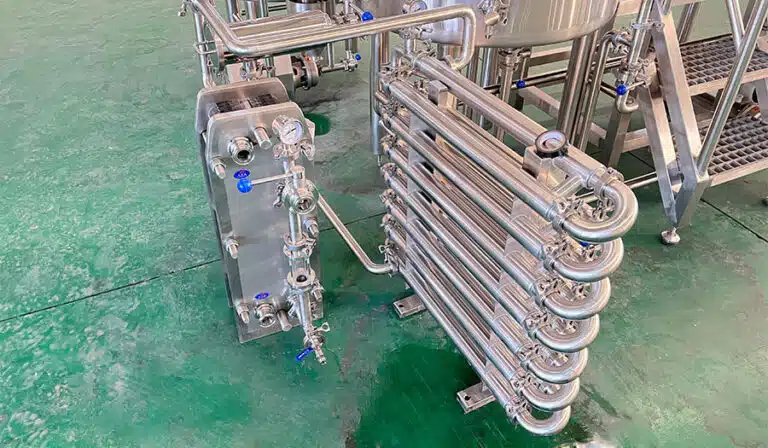
Účinnost chlazení
Účinnost chlazení je jedním z nejdůležitějších faktorů při výběru chladiče mladiny. Účinnost chladiče přímo určuje rychlost chlazení a kvalitu piva. Obecně platí, že trubkové a deskové chladiče mají vyšší účinnost chlazení a dokáží mladinu zchladit za kratší dobu, zatímco hrncové chladiče jsou levnější, ale mají nižší rychlost chlazení.
Materiál a odolnost
Materiál chladiče mladiny přímo ovlivňuje jeho trvanlivost a snadné čištění. Mezi běžné materiály patří měď, nerezová ocel a hliníková slitina. Nerezová ocel je odolná proti korozi a snadno se čistí, takže je pro domácí pivovarníky první volbou; měď má sice dobrou tepelnou vodivost, ale vyžaduje pravidelné čištění a údržbu; slitina hliníku je relativně levná, ale méně odolná.
Čištění a údržba
Čištění a údržba chladicího zařízení jsou klíčové pro zajištění kvality piva. Bez ohledu na zvolený typ chladicího zařízení musí pivovarníci chladicí zařízení pravidelně čistit, aby se v něm nehromadily nečistoty a bakterie a neovlivňovaly kvalitu piva. Deskové a trubkové chladiče se čistí obtížněji a je třeba je rozebrat a důkladně vyčistit; hrncové chladiče se čistí poměrně snadno.
Rozpočet a rozsah
Vyberte si vhodný chladič mladiny podle svého rozpočtu a rozsahu vaření. Pokud se věnujete pouze domácímu vaření v malém měřítku, může vašim potřebám vyhovovat hrncový nebo malý deskový chladič; pokud vaříte ve velkém měřítku nebo komerčně, doporučujeme zvolit trubkový nebo deskový chladič s vyšší účinností chlazení, abyste zajistili rychlé chlazení a zajistili kvalitu piva.
ČASTO KLADENÉ DOTAZY
Jaká je hlavní funkce chladiče mladiny?
Hlavní funkcí chladiče mladiny je rychlé ochlazení uvařené mladiny na teplotu vhodnou pro kvašení kvasinek. Tento proces nejenže zabraňuje bakteriální infekci, ale také pomáhá odstranit z mladiny usazeniny, aby byl zajištěn hladký průběh pivovarského procesu.
Proč je třeba mladinu rychle zchladit?
Mladinu je třeba po varu rychle zchladit, protože pomalé chlazení může způsobit množení bakterií a ovlivnit kvalitu piva. Příliš vysoká teplota navíc potlačuje činnost kvasinek a ovlivňuje proces kvašení, čímž ovlivňuje chuť a vůni piva.
Jaký typ chladiče je vhodný pro domácí vaření piva?
Pro domácí pivovary jsou nejčastější volbou chladiče na hrnce a malé chladiče na talíře. Hrncové chladiče jsou jednoduché na obsluhu a relativně levné, vhodné pro začátečníky; deskové chladiče mohou zajistit vyšší rychlost chlazení a jsou vhodné pro pivovarníky s určitými zkušenostmi.
Jaká je životnost chladiče mladiny?
Životnost chladiče mladiny závisí na materiálu a údržbě. Obecně platí, že chladiče z nerezové oceli jsou odolnější než chladiče z mědi a hliníkové slitiny. Pravidelné čištění a správná údržba mohou prodloužit jejich životnost.


